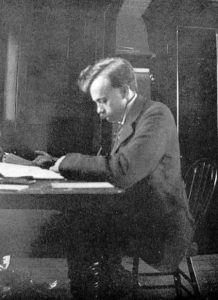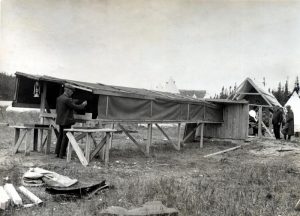John Stanley Plaskett (1865 – 1941)
John Stanley Plaskett (1865–1941) grew up on a farm near Woodstock, Ontario. As a child, his brother, Thomas, noted that “he would be delving into books or working on some hobby” instead of spending his free time playing like other kids. In spite of his bookish nature, Plaskett’s education had to be put on hold. His father died on his sixteenth birthday and he had to take over running the family farm.
Plaskett left the farm in 1884 at the age of 19 to apprentice at Whitelocks Foundry, a Woodstock firm. He then worked for Thomas Edison’s company in Schenectady, New York before joining the University of Toronto as a mechanician (technician) in 1890. In 1895 Plaskett resumed his education, with the encouragement of his wife, and enrolled in coursework at the University of Toronto. He completed his degree in physics in 1899.
The Dominion Observatory in Ottawa hired Plaskett as an astronomer in 1903, and he became responsible for astrophysics work there. He used Ottawa’s 15-inch telescope to take spectra of stars and measure their velocities, and his mechanical aptitude even allowed him to make several improvements to the equipment. In 1905, he organized and led an eclipse expedition to Labrador, which was a significant undertaking.
In 1910, Plasket attended a scientific meeting in Pasadena, California to share his work. He returned to Ottawa inspired with the vision of building a new large telescope for Canada, and in 1918 his hard work finally resulted in the opening of the 1.8-meter telescope in Victoria. Plaskett became its first director and led its scientific work. In 1922 he discovered “Plaskett’s Twins,” two of the most massive stars known, but his most noteworthy work was on the Milky Way Galaxy.
Plaskett received many awards during his lifetime. One of these was the prestigious Henry Draper Medal, which is awarded every four years by the United States National Academy of Sciences “for investigations in astronomical physics.” Plaskett received his in 1934 “For his able and consistent labours in stellar radial velocities, and related studies energetically pursued for nearly 30 years.” His obituary in the New York Times read that Plaskett “Gave World Its Most Accurate Information on Rotation of Galaxy.” A story on his death also appeared in the Victoria Daily Times.
An award-winning biography of Plaskett by Peter Broughton is available for those interested in the story of this amazing Canadian.




